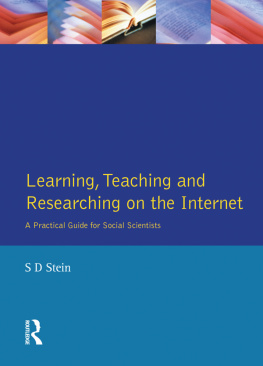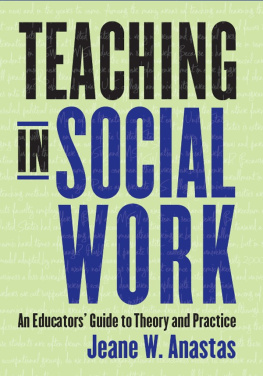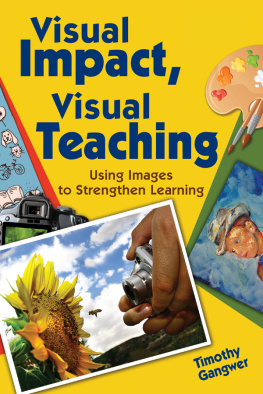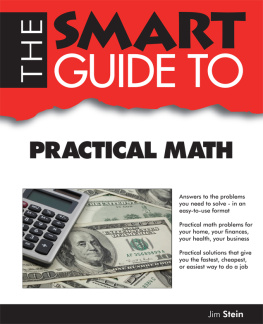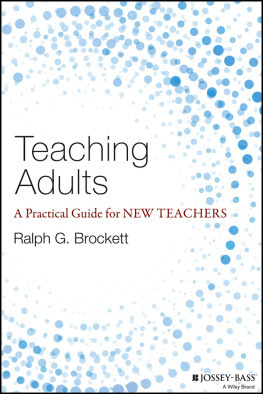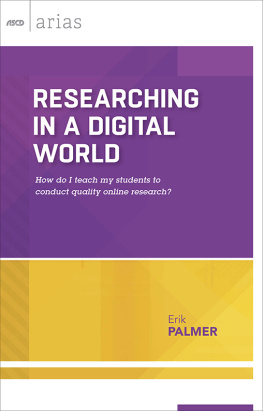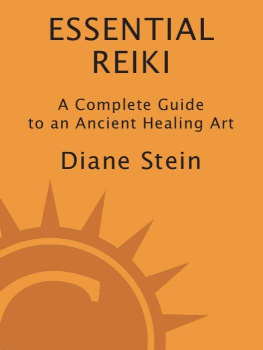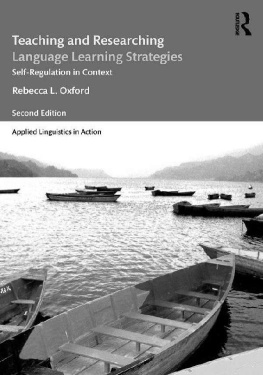First published 1999 by Pearson Education Limited
Second impression 1999
Published 2014 by Routledge
2 Park Square, Milton Park, Abingdon, Oxon OX14 4RN
711 Third Avenue, New York, NY 10017, USA
Routledge is an imprint of the Taylor & Francis Group, an informa business
Copyright 1999, Taylor & Francis.
The right of S.D. Stein to be identified as author of this work has been asserted by him in accordance with the Copyright, Designs and Patents Act 1988.
All rights reserved. No part of this book may be reprinted or reproduced or utilised in any form or by any electronic, mechanical, or other means, now known or hereafter invented, including photocopying and recording, or in any information storage or retrieval system, without permission in writing from the publishers.
Notice
Knowledge and best practice in this field are constantly changing. As new research and experience broaden our understanding, changes in research methods, professional practices, or medical treatment may become necessary.
Practitioners and researchers must always rely on their own experience and knowledge in evaluating and using any information, methods, compounds, or experiments described herein. In using such information or methods they should be mindful of their own safety and the safety of others, including parties for whom they have a professional responsibility.
To the fullest extent of the law, neither the Publisher nor the authors, contributors, or editors, assume any liability for any injury and/or damage to persons or property as a matter of products liability, negligence or otherwise, or from any use or operation of any methods, products, instructions, or ideas contained in the material herein.
ISBN 13: 978-0-582-31935-6 (pbk)
British Library Cataloguing in Publication Data
A catalogue record for this book is available from the British Library
Library of Congress Cataloging-in-Publication Data
Stein, S. D. (Stuart D.)
Learning, teaching, and researching on the Internet: a practical guide for social scientists/S.D. Stein,
p. cm.
Includes bibliographical references and index.
ISBN 0-582-31935-8
1. Social sciences--Computer network resources. 2. Internet (Computer network) I. Title.
H61.95.S73 1998
Set in 10/12pt Times
Typeset by 42
This book is aimed at students and academic staff whose recourse to Internet-based resources is likely to be essentially pragmatic. The questions that they are likely to be interested in include the following:
What resources are available?
How can I find them most efficiently?
What type of Internet forums exist?
What do those participating in these forums do?
How do I locate potentially useful forums, mailing lists and newsgroups, for instance, that deal with subjects relevant to me?
How do I manage participation in these forums, such as subscribing, unsubscribing, retaining anonymity, searching archives of past exchanges, etc.?
Should I have mailing list messages sent individually or in a weekly or daily digest?
Which are the primary Web sites dealing with my subject specializations?
How do I reference Internet materials?
How do I keep up with new additions to Web resources?
Should I use a subject directory, Yahoo or SOSIG, for instance, or a search engine to locate a specific document?
What search syntax should I employ in order not to have to sift through thousands of records?
How do I efficiently bookmark Web sites?
How can I track down a resource that I found earlier but which cannot be accessed from the same Web address subsequently?
These are some of the questions that are addressed in this book. It is not aimed, therefore, at students or staff who wish to become experts on all matters associated with the Internet and its varied forums, although it does provide a useful foundation for those who would wish to do so. Throughout I have assumed that most students and academic staff who will want to explore the uses of the Internet will wish to do so in order to accomplish more efficiently their primary interests in teaching, learning and researching. It is entirely feasible to track down subject-specific materials located on computers linked to the Internet, to manage participation on mailing lists, to learn how to reference resources accessed over the Internet, and to keep abreast of new developments, without having to become an Internet expert. Moreover, it is not necessary to have had any prior experience of using information technologies.
My own experiences in integrating the use of Internet resources and electronic platforms in modular delivery have convinced me that they can be deployed to improve the teaching, learning and research experiences of both students and academic staff. The courses that I teach on the Holocaust and Comparative Genocide at the Universities of the West of England and Bristol rely extensively on students and lecturers using materials accessible over the Internet, as well as a conferencing system. Another module that I have taught is Human Rights and their Violation in the Twentieth Century. On this course the majority of the materials used by students are accessed from Internet sources.
Some of these resources are not available in our library. Some are not available in any library as there is no printed version of the original material. In other cases they are available in a more useful format from Internet sources, or can be accessed more easily. Frequently, commentary, reports and hard copies of legislation take months if not years to find their way into the library, if at all. By the time some of them have cleared through ordering, purchasing, cataloguing and labelling there are often topics of more immediate interest to pursue. Internet forums also provide valuable opportunities for exchanging views and collaborating with students, researchers and teachers with similar interests at other locations. They also provide ample scope for locating informants and information that can be used in the context of social scientific research.
The first part of the book provides a basic overview of the infrastructure of the Internet and its relation to other networks, explores the use of Web browsers, and includes chapters on Internet addresses and the referencing of Internet resources. Many students and staff will already be familiar with the use of Web browsers and Internet addresses, the latter in the sense that they regularly type them into the location boxes, or select hyperlinks. In my experience many of those using browsers and other Internet applications use them less efficiently than they could, to their detriment in terms of time lost and the failure to track down resources being sought. Only a relatively small number of users appreciate that the Internet address of a resource is a potentially valuable piece of information for tracking it down if it can no longer be accessed at its previous location. Few students or academic staff are conversant with the conventions for referencing Internet resources, something which probably prevents many from using them in the context of teaching and research.
focuses on the development of search skills. After a review of some of the more important subject directories and their uses, I explore briefly the workings of search engines and then concentrate on the development of basic and advanced searching techniques using them. There are now hundreds of different types of search engines available. Typing in a word and returning a list of records that meet the query syntax is not difficult. What does require some experience and knowledge is the technique of filtering out unwanted records. The volume of information accessible over the Internet in conjunction with the way in which search engines parse files can result in hundreds of thousands of hits, that is documents that match the search syntax. No one has the time or the mental energy to sift through all of this chaff. If you construct your query carefully you should be able in many instances to ensure that the information that you require is included in the first 30 or 40 records returned. If not, as I argue later, you should construct a different query. With experience and some experimentation you should narrow this down to the first 10. Experts can narrow it down to three. Anyone who works their way through these chapters can become quite expert. The savings in time will be considerable.

